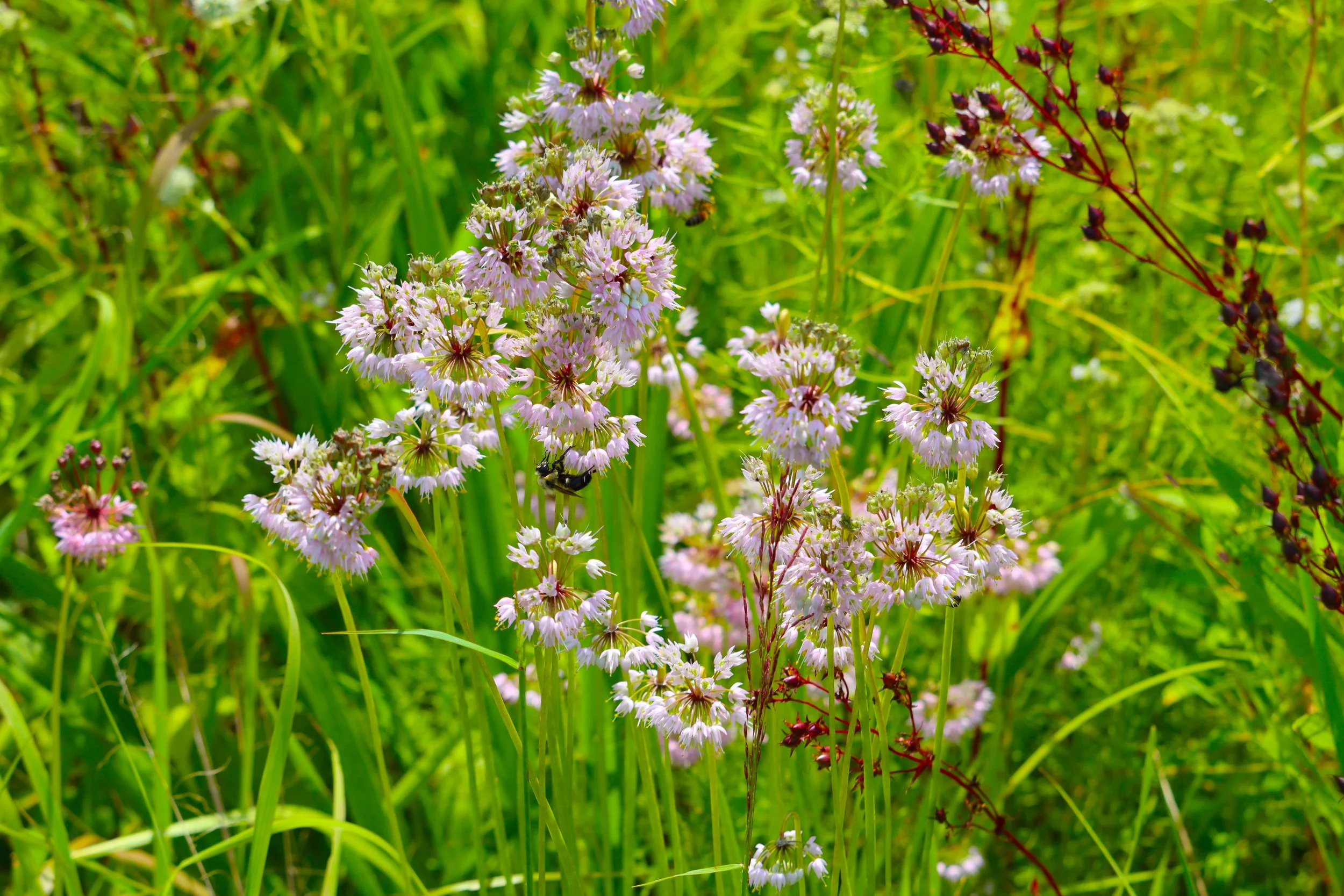(Above Picture) Butterflyweed (Orange), Purple Prairie Clover, and Little Bluestem.
Native Plants are plants indigenous to a region as opposed to plants brought to or imported to a region by humans. Native Plants are the best plants for restoring ecosystem health, and attracting wildlife such as native bees, butterflies, birds and other native organisms. It’s important to plant Native Plants because they make the food chain function properly and most productively. This is a short article about a native plant you can grow on your property.
Butterflyweed (Asclepias tuberosa) is aptly named - its high nectar production and bright color attract many types of butterflies. Being a type of milkweed, it is also a host plant for Monarch and Queen butterflies in addition to specific moth species. Bees, Beetles, Diptera species, Wasps, Sawflies, and Ants also make use of it making Butterflyweed (and milkweeds in general) one of the most lively plants in the garden or a meadow.
(Above Picture) Butterflyweed and Common Milkweed penetrating an unmown field of turf grass.
Butterflyweed is sensitive to being planted with non-local genetics. For example when Butterflyweed seed from a different USDA zone is planted in a more northern or southern zone than from where it originated; the bloom period is often unsynchronized with the local - wild butterfly weed and the lifespan of the non-locally sourced plants is often shortened considerably. So it’s important to try to find butterfly weed seed as local to your USDA zone as possible to maximize its chances of being adapted to your native meadow installation or pollinator garden.
Close up of Butterflyweed
While it can grow in moderate moisture conditions, it’s best adapted to drier where plants are shorter and it can compete well for sunlight. In pollinator gardens it’s best used as a foreground plant on the edge of the planting. Southern and Western Oriented full sun exposed slopes are excellent places to establish Butterflyweed.
Companion Plants for Butterflyweed
Click Images Below to Expand them.
Select/click the images above to expand them then click/tap to advance to the next picture. Also, Turn your cellphone side ways for horizontal pictures, and straight up and down for vertical pictures.
Companion Plants (Pictured Above): Golden Alexander, Downy Wood Mint, Sand Coreopsis, Calico beardtongue, Foxglove Beardtongue, Rudbeckia hirta, Tennessee Coneflower, Eastern Prickly Pear, Nodding Onion, White Prairie Clover, Purple Prairie Clover, Slender Mountain Mint, Long-headed Coneflower, Hoary Vervain, Mistflower, Rough Blazing Star, Aromatic Aster, Dwarf Goldenrod, Little Bluestem, Prairie Dropseed.
Butterflyweed Germination Tips for Plugs: Cold-Moist Stratify the seed for 30 to 40 days and then sow 1/10th of an inch below the surface.
Receive 40% off of our Native Plant Propagation Guide/Nursery Model book when purchased as a package. deal with either our Native Meadowscaping book or our Native Plant Agriculture book at this link.
Learn about what our Native Meadowscaping book has to offer here at this link.
Learn about what our Native Plant Agriculture Vol. 1 book has to offer here at this link.
Learn about what our Native Plant Propagation Guide & Nursery Model has to offer here at this link.





















